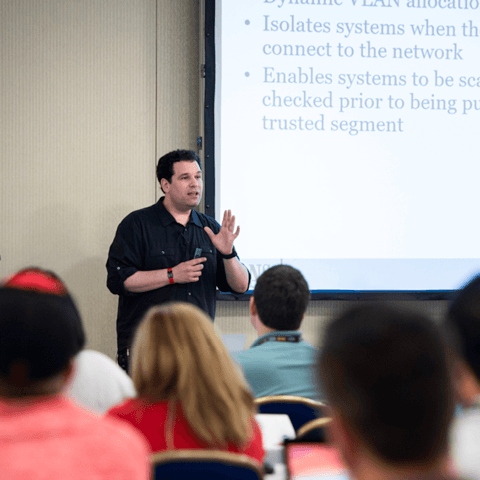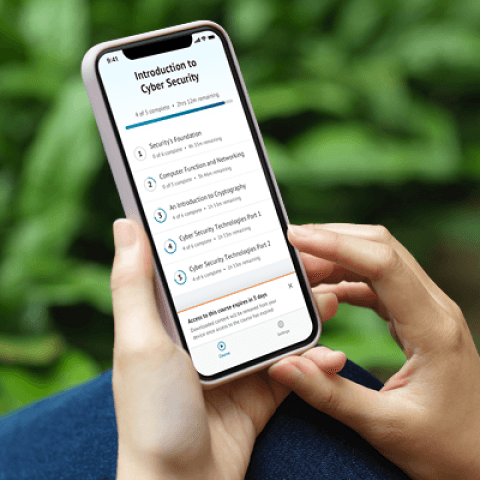SEC595: Applied Data Science and AI/Machine Learning for Cybersecurity Professionals


Experience SANS training through course previews.
Learn MoreLet us help.
Contact usBecome a member for instant access to our free resources.
Sign UpWe're here to help.
Contact Us
Apply your credits to renew your certifications
Attend a live, instructor-led class at a location near you or remotely, or train on your time over 4 months
Course material is geared for cyber security professionals with hands-on experience
Apply what you learn with hands-on exercises and labs
Master tactical, operational, and strategic cyber threat intelligence skills. Improve analytic processes and incident response effectiveness to support your detection and response programs.
Cyber Threat Intelligence is an entire discipline, not just a feed. This course will propel you along the path to understanding this rapidly maturing field of study.
Cyber threat intelligence training is essential for countering today’s flexible, persistent human threats and targeted attacks. In FOR578 Cyber Threat Intelligence™, you’ll learn to assess complex scenarios and develop skills in tactical, operational, and strategic-level threat intelligence. This course empowers you to expand your existing knowledge and establish new best practices for security teams.


Rebekah Brown has been instrumental in advancing cyber threat intelligence, serving as a network warfare analyst at the NSA, Operations Chief of a U.S. Marine Corps cyber unit, and training lead at U.S. Cyber Command.
Read more about Rebekah Brown

SANS Fellow and Dragos CEO Robert M. Lee, author of ICS515 and FOR578 and co-author of ICS310, teaches from landmark industrial cyber investigations, turning real adversary tradecraft into visibility, detection, and response skills in OT.
Read more about Robert M. LeeExplore the course syllabus below to view the full range of topics covered in FOR578: Cyber Threat Intelligence.
This section introduces students to the most important concepts of intelligence, analysis tradecraft, and levels of threat intelligence, as well as the value they can add to organizations.
In this section, students will be walked through and participate in multi-phase intrusions from initial notification of adversary activity to the completion of analysis of the event. The section also highlights the importance of this process in terms of structuring and defining adversary campaigns.
In this section students will learn to seek and exploit information from domains, external datasets, malware, Transport Layer Security/Secure Sockets Layer (TLS/SSL) Certificates, and more. Students will also structure the data to be exploited for purposes of sharing internally and externally.
In this section students will learn how to structure and store their information over the long term using tools such as MISP; how to leverage analytical tools to identify logical fallacies and cognitive biases; how to perform structured analytic techniques in groups such as analysis of competing hypotheses; and how to cluster intrusions into threat groups.
Intelligence is useless if not disseminated and made useful to the consumer. In this section students will learn about dissemination at the various tactical, operational, and strategic levels.
The FOR578 capstone focuses on analysis. Students will be placed on teams, given outputs of technical tools and cases, and work to piece together the relevant information from a single intrusion that enables them to unravel a broader campaign.
Responsible for analyzing data from multiple disparate sources to provide cybersecurity and privacy insight. Designs and implements custom algorithms, workflow processes, and layouts for complex, enterprise-scale data sets used for modeling, data mining, and research purposes.
Explore learning pathThis expert applies new threat intelligence against existing evidence to identify attackers that have slipped through real-time detection mechanisms. The practice of threat hunting requires several skill sets, including threat intelligence, system and network forensics, and investigative development processes. This role transitions incident response from a purely reactive investigative process to a proactive one, uncovering adversaries or their footprints based on developing intelligence.
Explore learning pathAnalyzes data from multiple sources to prepare environments, respond to information requests, and support intelligence planning and collection requirements.
Explore learning pathResponsible for collecting, processing, analyzing, and disseminating cybersecurity threat assessments. Develops cybersecurity indicators to maintain awareness of the status of the highly dynamic operating environment.
Explore learning pathIdentifies collection priorities, develops plans using available assets, and monitors execution to meet operational intelligence requirements.
Explore learning pathCollect, process, analyse data and information to produce actionable intelligence reports and disseminate them to target stakeholders.
Explore learning pathThese resourceful professionals gather requirements from their customers and then, using open sources and mostly resources on the internet, collect data relevant to their investigation. They may research domains and IP addresses, businesses, people, issues, financial transactions, and other targets in their work. Their goals are to gather, analyze, and report their objective findings to their clients so that the clients might gain insight on a topic or issue prior to acting.
Explore learning pathResponsible for identifying and assessing the capabilities and activities of cybersecurity insider threats; produces findings to help initialize and support law enforcement and counterintelligence activities and investigations.
Explore learning pathAdd a GIAC certification attempt and receive free two practice tests. View pricing in the info icons below.
When purchasing a live instructor-led class, add an additional 4 months of online access after your course. View pricing in the info icons below.
Threat intelligence analysis has been an art for too long, now it can finally become a science at SANS. Mike Cloppert and Robert M. Lee are the industry 'greybeards' who have seen it all. They are the thought leaders who should be shaping practitioners for years to come.
This course is terrific! Class discussion and relevant case studies are extremely helpful for better understanding the content.

Get feedback from the world’s best cybersecurity experts and instructors

Choose how you want to learn - online, on demand, or at our live in-person training events

Get access to our range of industry-leading courses and resources